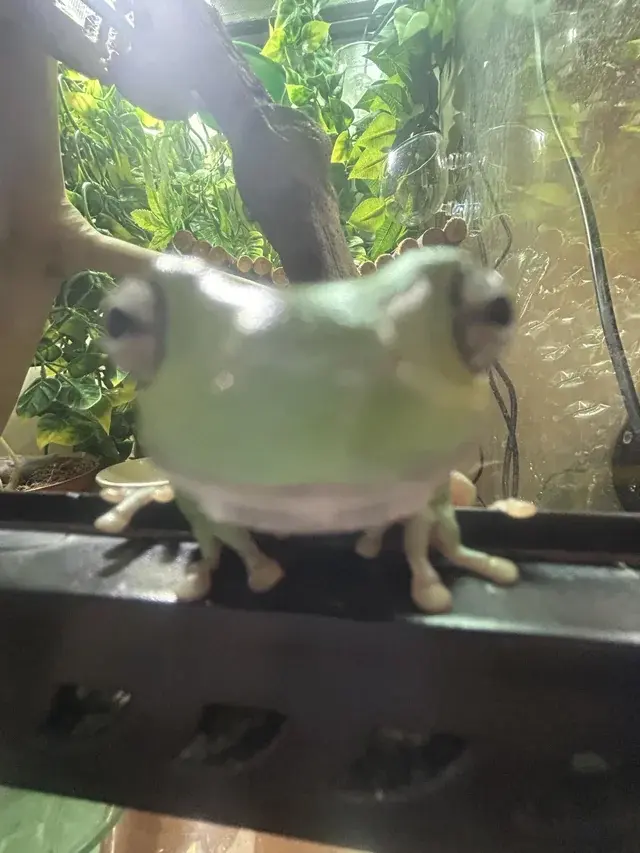Let’s say I hypothetically had some mice pee in some plastic components that cannot be properly cleaned in any realistic way. Is it possible to heat it up to “cook off” the mouse pee nastiness without actually melting the plastic?
perhaps I’m committing some well known Internet discussion faux pas, but whatever you’re trying to do is probably not going to work.
Definitely, a faux pas. A correct answer would be: “try it, film it, share it.”
Like that guy that posted photos of him electrocuting his testicles with a car battery to prove it wouldn’t hurt?
Exactly! The Internet is built from such can-do spirit.
Shit, I gotta see this. Do you have a link?
I’m afraid I don’t, but it’s easily one of the most famous reddit posts ever, you’ll find it if you look it up.
It was in a thread on a post about someone who seemingly found a homemade electric chair in an abandoned house iirc. The chair was connected to a car battery, and Electro-Balls wanted to show everyone that a car battery didn’t generate enough current to cause pain, let along hurt/kill someone.
Edit: Decided to find it because I wanted to see if I got the story right. I got the story right
“The most painful thing was attaching the alligator clips from the power supply, but aside from that, I’d like to report a mild, and almost pleasant tingling sensation.”
Well, he’s right, 12v can’t break the resistance of the skin. It’s why cars are mostly 12v, it’s a safety thing. Every now and then you hear about some guy managed to kill himself working on a 24 volt vehicle without taking proper precautions. Anyways the way to torture with a car battery is using it to heat metal up.
The hero we need, not the hero we deserve. Thanks champ!
kinky.
It depends what you mean by nastiness. Doesn’t urine contain salts that you’re never going to realistically boil?
While urine doesn’t typically contain large amounts of protein, it may be present along with other metabolites that I don’t expect can be boiled.
Uric acid and urea can be boiled off over about 200 Celsius, but you are going to have residue remaining.
Get some enzyme spray specifically for addressing pet urine. There are lots of varieties online from pet warehouse places. Nature’s Miracle is a popular one. Get the urine destroyer, the stain and odour eliminator isn’t as good.
It actually breaks down the urine residue as opposed to the other suggestions here which mask or encapsulate the smell without addressing the source.
I have used enzyme on quite a few things I thought would never be usable again - def worth their weight in gold in my experience.
Thanks! This seems like it’s the best solution for my problem, maybe both of them.
Came here to say this. Also, if bleach won’t damage it, bleach is good.
Edit. A .
It’s more about It’s ability to move fluidly (gasously I guess…) and interact with anything else that got itself caught up in the plastic ductwork of the vehicle, other things in the barn I have more time. But spring is upon me, and it won’t be worth fighting over this if I can’t get it to not smell so ridiculous.
I think it depends on what you’re going to use the plastic component that were sullied for.
Food Tupperware? You’re SOL. It’s porous and now contaminated. A plastic computer component? Disinfect it with diluted bleach.
I’m not sure heating mouse urine is a good idea, it certainly won’t smell pleasant, I can tell you that.
Bleach doesn’t really work with urine… I’ve tried.
It really needs an enzymatic cleaner. Which I tried after the bleach.
Now that works
Omg the smell from heating it…
Use white wine vinegar to clean it. Vinegar denatures urine. Then wash again with soap and water to get rid of the vinegar smell (if necessary).
Edit: also good for getting out the cat pee smell from when your cat decides to get back at you for whatever you did to piss it off.
Source: 45 years of owning cats and things I don’t want to throw away.
Sure, but then dude has got little dentures rolling around in there. And that won’t help.
wat
I said “denatures” not “dentures”
Do I even dare to ask why you need to know this?
Whatever you decide, please wear an N95 mask while cleaning - https://en.m.wikipedia.org/wiki/Orthohantavirus
Probably the same temperature as mouse. Some of them solids don’t cook off.
Since you mention this is a vehicle, I think the ozone generator approach is probably easiest.
I’ve had vehicles with similar issues, and open windows + time really did it. An ozone generator is the faster version of what I’ve done.
Just don’t let it go crazy, as ozone attacks pretty much most materials in a car. So maybe throw a generator in it, let it run for a couple hours (put a small fan in the car to really circulate it up under the dash), then air out the car well.
The idea is the urine is probably more reactive to the ozone than anything else, so get it reacting. Then stop and clear the air before it has too much time/concentration to start on the plastics.
If urine is in the carpet, use the enzyme with an upholstery cleaner (similar to a carpet cleaner) - then you’ll be pulling the nasty out with vacuum.
Enzymatic cleaner is amazingly effective. Used it in a camper that had mouse nests everywhere.
So I had a similar issue in the past that I used an ozone generator for… all of my upholstery just unglued itself. So this is one of the solutions that has been suggested among “just torch the thing and collect the hefty insurance on” that I am trying not to do lol… but enzymatics have been suggested elsewhere and apparently have come a long way. That’s definitely my next try.
ozone is an oxidizing agent. it destroys smells by oxidizing the proteins and such that create the smell.
Unfortunately, this also means that any plastics or adhesives used will generally be broken down too. (the degradation in plastic is similar in effect to UV exposure, where the adhesives just… as you mentioned… becomes ‘unglued’)
Enzymatic cleansers will likely be a better solution. Though, I’ve used ozone generators to remove some truly… unique… smells; when I was working for a college cleaning dormitories. but it really is a nuclear option.
Have a recommendation for a good enzymatic?
Go to a pet store, get the stuff for pet urine. I used one on a badly mouse-pee impregnated camper. (I mean BAD, had to rip out some of the interior). The cleaner worked on everything else, including wood that had absorbed years of mouse pee.
If you use the ozone generator, maybe do it in small doses, just under the dash. Today’s plastics don’t age from oxygen exposure like 1970s cars did, so it’ll probably hold up a lot better.
I remember 2 year old cars in the 70s with degrading plastics (cracked, out gassing coating the interior glass, etc.). Cars since the 90s have much improved plastics.
Are all the enzymatic basically the same then?
Anyone have an idea of how to aerosolize the enzyme into the ventilation? I have a small air compressor, can I make a contraption with that?
Most ducting in the dash of vehicles can be accessed with just a screwdriver, and there are usually only a handful of screws and plastic fasteners/snaps you have to remove. Downloading the diagram from a shop manual will show you where they are so you don’t have to find each of them, but it’s usually apparent in situ.
If you don’t remove the ducts to clean them, while you may be able to lessen the smell by removing vent covers and snaking cleaning materials through the ductwork, your car will still always smell. The only way to get rid of the smell entirely is to remove the affected ducts and properly wash them.
Before any if that, however: do you know which ducts are affected? It will reduce your workload considerably, especially if the affected duct is in fact your fresh air intake, as I would expect.
The way I would determine that is to
- run the fan on high with recirculate ON and all windows open for several minutes, then
- sit inside and close the windows. Is the smell lessened from before?
- If so, confirm the diagnosis by turning recirculate off. If the smell suddenly gets stronger, it’s likely the rodent never made it past the blower manifold.
In that case you’re in luck, as you may not need to disassemble the dash much at all. (You would be working mostly in the engine compartment and passenger footwell.)
Definitely higher than the softening point of the plastic. What kind of parts? Car, residential appliance, etc?
It’s a couple different things, but one of them is automotive plastics. There is just no way to get to parts without tearing the entire thing apart, and I don’t have the time or technical skills to do it quickly. And even if I did, I am not sure if it would really be worth it because of how infrequently it’s used.
You might be able to soak it in some kind of water/soap or isopropyl bath and then dry it. If it has electronics it might not be doable without taking things apart
You pretty much either put so much heat into urea that it turns to ammonia and melts your plastic while doing so or you wait for some bacteria to eat it and turn it into ammonia. It technically starts vaporizing at above 130 C.










